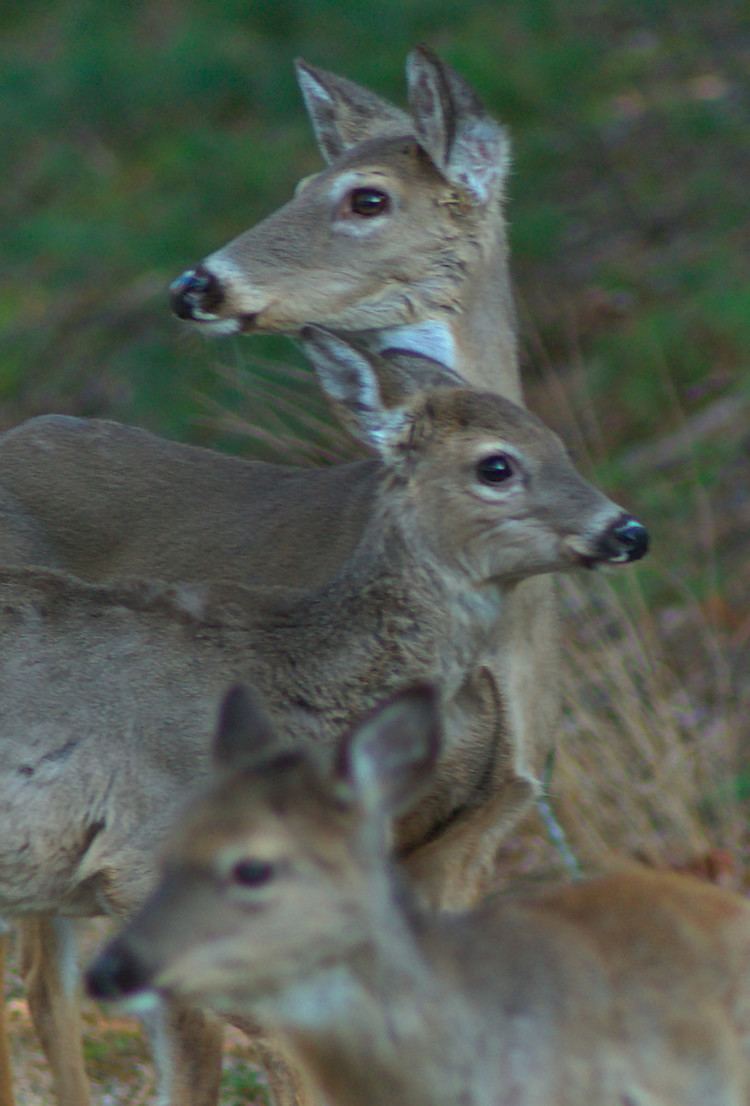 | ||
This article seeks to serve as a field-guide, central repository, and listing for the flora and fauna of North Carolina and surrounding territories.
Contents
State ecology
North Carolina's geography is usually divided into three biomes: Coastal, Piedmont, and the Appalachian Mountains.
North Carolina is the most ecologically unique state in the southeast because its borders contain sub-tropical, temperate, and boreal habitats. Although the state is at temperate latitudes, the Appalachian mountains and the Gulf Stream influence climate and, hence, the vegetation (flora) and animals (fauna).
Coastal Region
Located in eastern North Carolina, the coastal region is much warmer and more humid.
Piedmont
This region includes the [urban area] and urban biomes of Raleigh and Durham, as well as a large area of semi-mountainous, rolling hills.
Mountains
Mammals
Mammals in North Carolina (not comprehensive):
Endangered, non-marine mammals in North Carolina:
In the mountains, there are small populations of bobcats and bears as well as re-introduced elk. Beaver, whose pelt trade was an important part of the North Carolina economy well into the 1800s, were hunted to extinction in 1897. Re-introductions began in 1939 and now beaver have returned to the entire state.
Birds
List of birds of North Carolina
Reptiles
Crocodilians:
Snakes without dangerous venom:
Snakes with venom dangerous to humans:
Lizards: North Carolina is home to 11 native species of lizard, and one introduced species.
Turtles:
Amphibians
Frogs are common in the marshy and wet regions of the Piedmont. The frog pictured at left is a Cope's gray treefrog (Hyla chrysocelis) or gray treefrog (H. versicolor). These two species cannot be differentiated except by their call or genetic analysis. However, H. versicolor is rare in the state and likely to not be pictured here. They are most abundant in some northern Piedmont counties. Other frogs of North Carolina include spring peepers, Pseudacris crucifer or Hyla crucifer. Common among Carolina forests, this frog lives in high branches of trees, although it is also seen on the ground and commonly on roadways.
Some common amphibians in North Carolina: two-toed amphiuma, common mudpuppy, dwarf waterdog, eastern lesser siren, greater siren, red-spotted newt, Mabee's salamander, spotted salamander, marbled salamander (state salamander), mole salamander, eastern tiger salamander, southern dusky salamander, dwarf salamander, four-toed salamander, Wehrle's salamander, eastern spadefoot, southern toad, Pine Barrens treefrog (state frog), Cope's gray treefrog, green treefrog, squirrel treefrog, gray treefrog, little grass frog, ornate chorus frog, upland chorus frog, American bullfrog, bronze frog, pickerel frog, southern leopard frog, wood frog
Fish
Freshwater: bodie bass, Roanoke bass, largemouth bass, rock bass, smallmouth bass, spotted bass, striped bass, white bass, blue catfish, channel catfish, flathead catfish, white catfish, brown bullhead, white perch, yellow perch, chain pickerel, redfin pickerel, American shad, hickory shad, pumpkinseed, redear, bluegill, flier, green sunfish, redbrest, warmouth, brook trout, rainbow trout, brown trout, garfish, bowfin, carp, crappie, freshwater drum, grass carp, kokanee salmon, muskellunge, tiger muskellunge, northern pike, sauger, eastern mosquitofish, smallmouth buffalo, walleye, the endemic Cape Fear shiner.
Saltwater: albacore, amberjack, Atlantic bonito, bank sea bass, barracuda, bigeye tuna, blackfin tuna, black drum, black sea bass, blacktip shark, bluefish, bluefin tuna, blue marlin, blueline tilefish, butterfish, cobia, croaker, dolphin, flounder, gag, gray triggerfish, gray trout, hammerhead, hickory shad, hogchoker, hogfish, humping mullet, king mackerel, knobbed porgy, lizardfish, little tunny, mako shark, menhaden, northern puffer, oyster toadfish, pigfish, pinfish, pompano, red drum, red grouper, red snapper, sailfish, scamp, sea mullet, searobin, sheepshead, silver perch, silver snapper, skate, skipjack tuna, spadefish, Spanish mackerel, speckled hind, spottail pinfish, spot, speckled trout, stingray, striped bass, swordfish, tarpon, tiger shark, vermillion snapper, wahoo, white marlin, white grunt, yellowfin tuna, yellowedge grouper, yellowtail snapper
Invertebrates
Various insects, jellyfish, millipedes, centipedes, freshwater crayfish, and freshwater mollusks.
